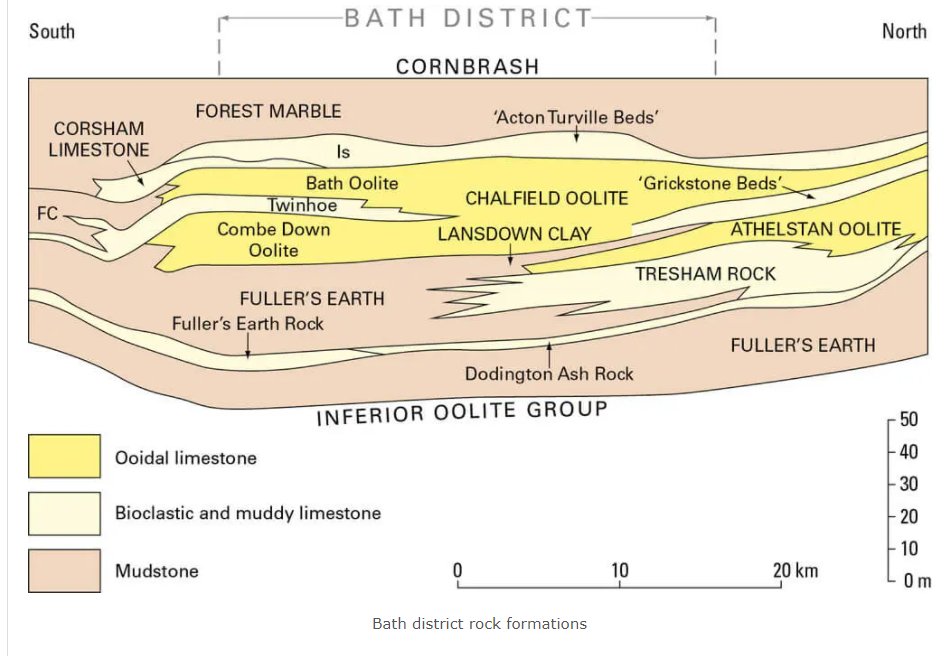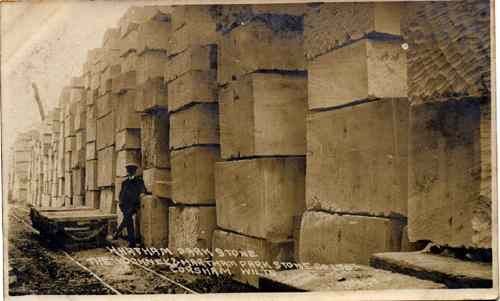Bath Stone is an Oolitic Limestone that was lain down as sediment in a warm shallow sea 170 million years ago during the Jurassic Period. Oolitic Limestone consists of minute spherical particles called Ooids, which usually consist of small fragments of shell coated with layers of calcite. Over time these have become cemented together to form the stone we find today.

The majority of limestone quarried in England comes from a belt of stone that runs from Portland and Purbeck on the south coast, -northwards along the Cotswolds and into Yorkshire. This belt of limestone has been extensively quarried for centuries along its length and many of these workings have supplied the stones used in most of our famous buildings. Although the stone comes from the same belt all have different compositions and can vary greatly in colour and quality. Bath stone is a member of the Great Oolite Series and comes from a small area at the southern end of the Cotswolds, to the south and east of Bath. The layer of stone which is on average twenty five feet thick is found at depths of between 30 to 120 feet below the tops of the hills lining the By Brook and the River Avon. Bath Stone is divided into beds varying greatly in thickness, also the quality of the stone can vary from bed to bed in the same location. Another feature affecting the size of the quarried blocks are Faults or Joints, which run vertically through the rock and are the result of earth movement during continental drift and subsidence of the slopes on the escarpments. Finally Bath Stone is classed as a Freestone – a stone that can be cut or squared in any direction, but to get the best use out of it, it must be laid on bed, i.e. it must sit in the building as it did in the ground.
The following is a list of all the different types of Bath Stone distinguished by the area they are quarried. An experienced stone mason could identify most of these from inspection, although certain anomalies do exist, for example if the stone was removed from the upper or lower beds in the same location they can have slightly different characteristics.
Stoke Ground, Winsley Ground, Westwood Ground, Farleigh Down, Kingsdown, Box Ground, Corsham Down, Corngrit, Hartham Park, Corsham Ground, Hartham Park Ground, Scallet, Corsham Blue, Monks Park, Ridge Corsham, Park Lane, Elm Park, Combe Down Oolite
Nowadays due to fewer working quarries, there is less choice available but a good compromise can still be achieved for restoration work. The stone when in the ground is classed as ‘green’ which means it is saturated with moisture. This is relatively easy to work as it is soft and cuts easily, however when it dries out on the surface it naturally becomes harder and more weather resistant. Stone quarried during the winter months needs to be protected from frosts due to the moisture content, generally, the blocks are stored underground until April, then taken to the surface storage to dry and be suitable for supplying the following winter.
Stacking ground at Hartham Park Quarry

